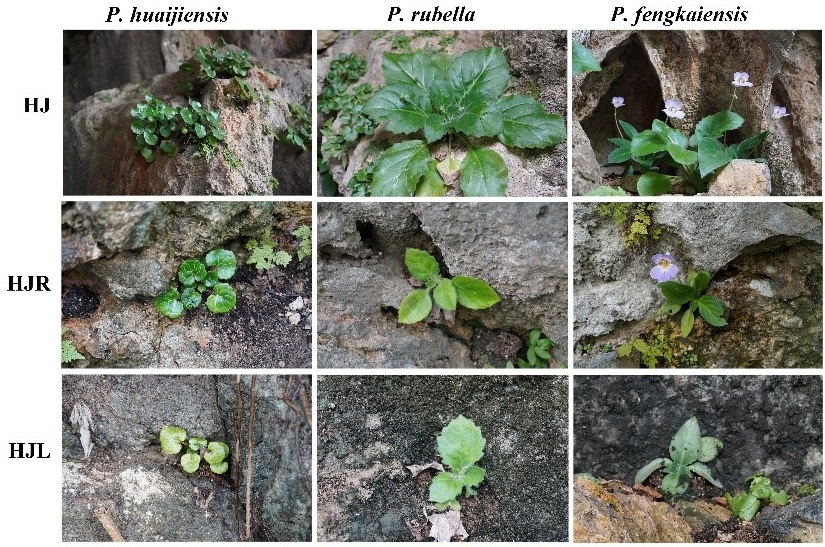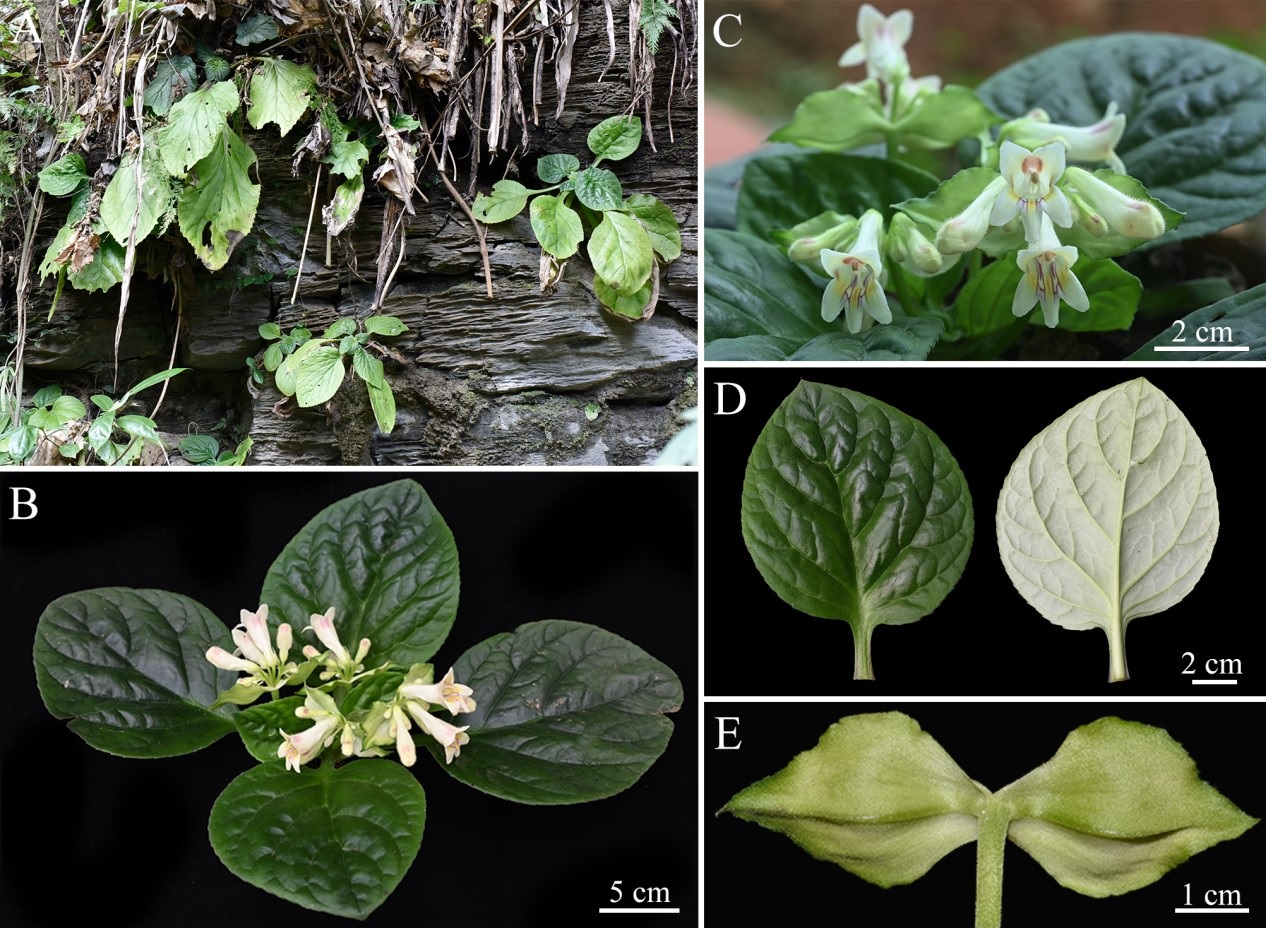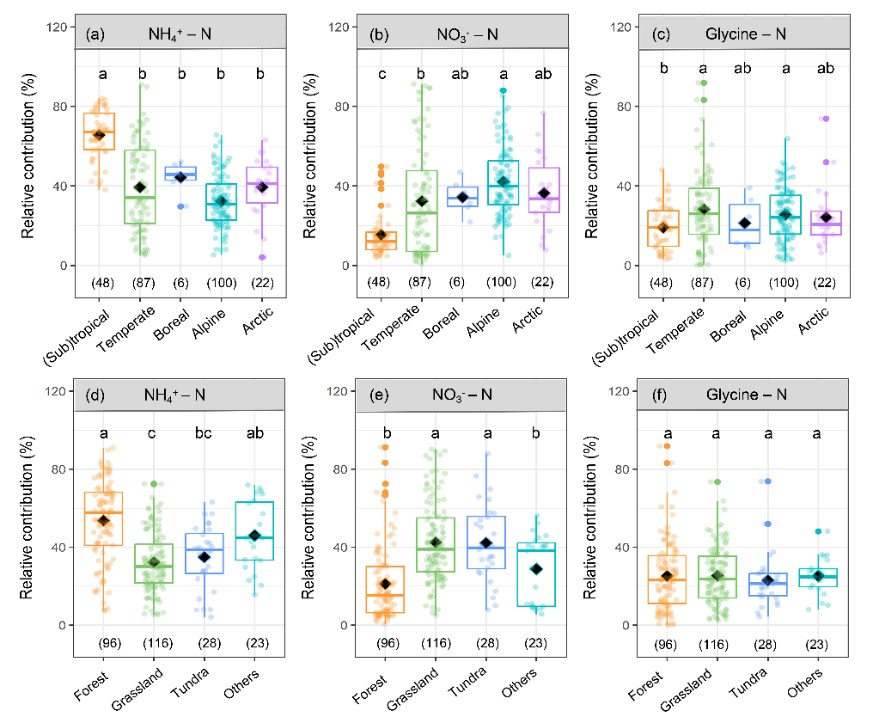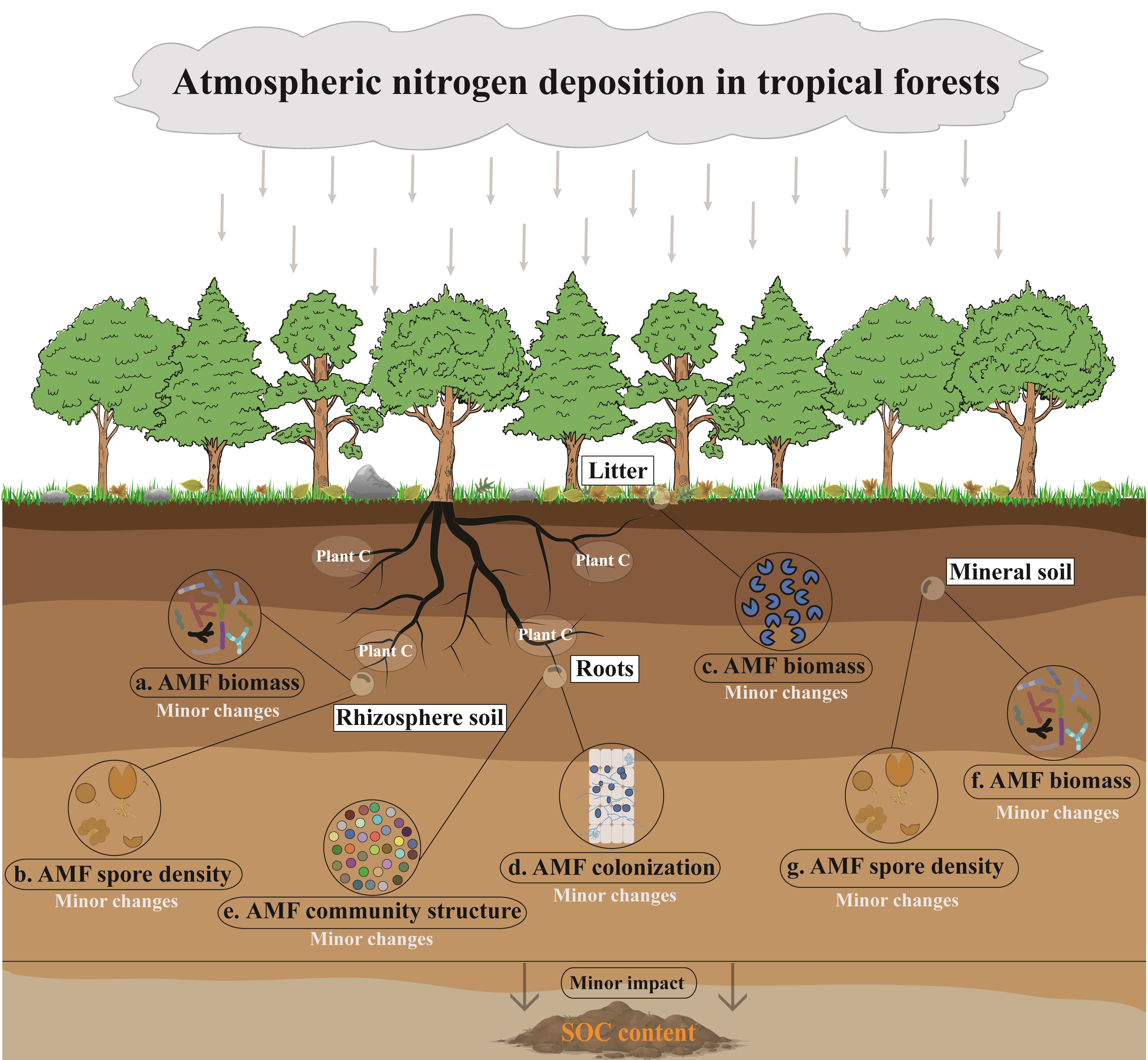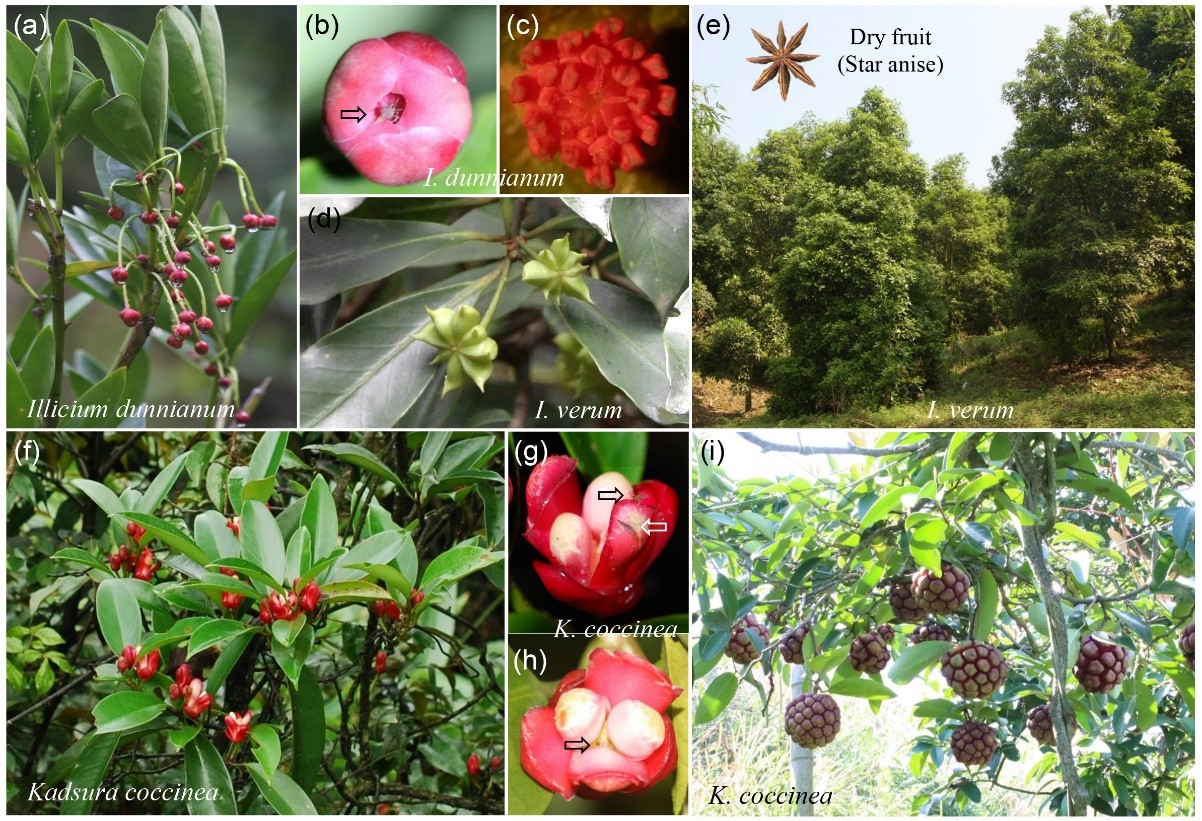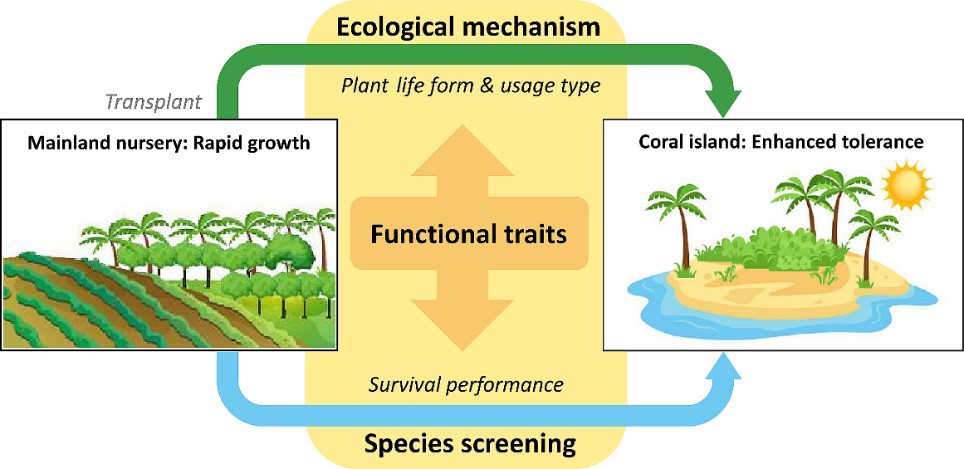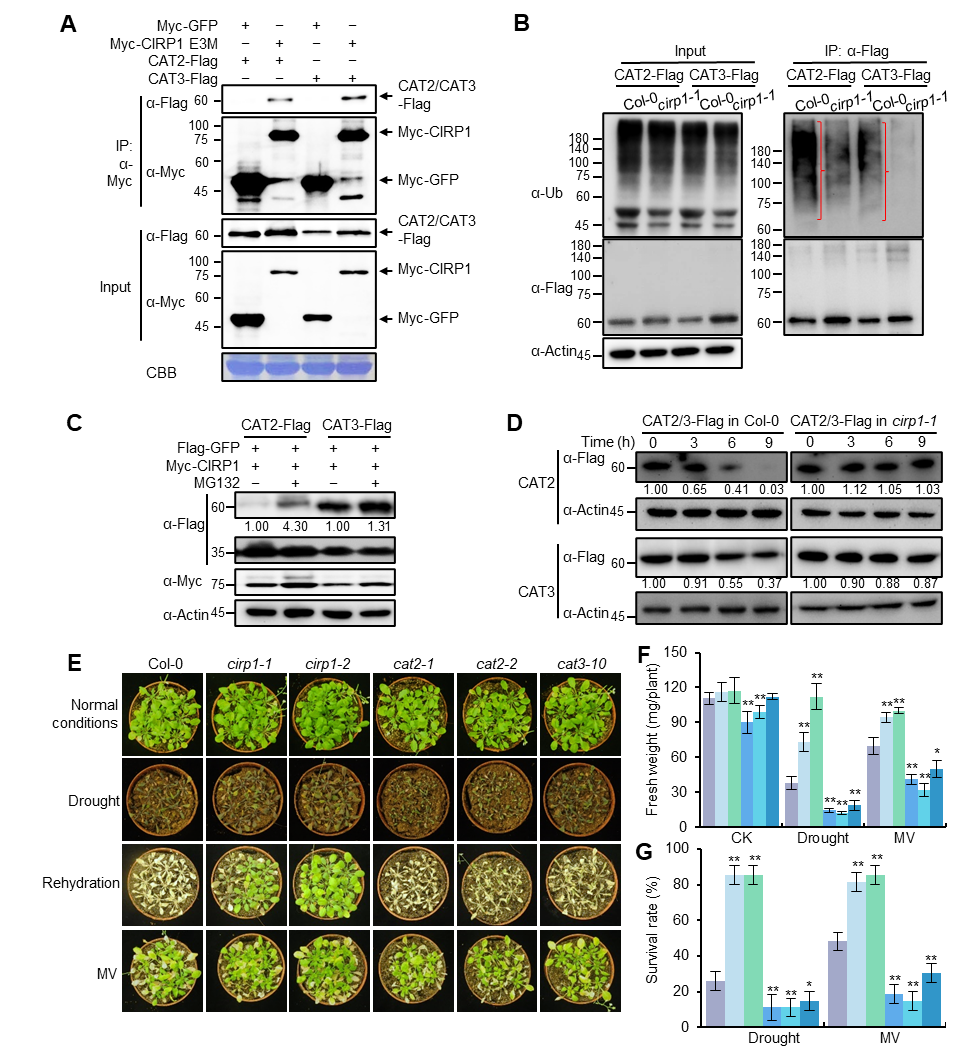News
-
2025-04-10Successful reintroduction of Primulina speciesRecoprocal transplant experiments were conducted to explore the adaptability of Primulina species to different karst cave habitats and confirm whether there are alternative habitats for conservation translocation. The results showed that P. huaijiensis, P. rubella and P. fengkaiensis could adapt to twilight zone of alternative caves under simila... Karst caves are hotspots of biodiversity and endemism, but threatened by human unsustainable activities. Many cave plants are site-endemic restricted in isolated caves and are at risk of extinction due to habitat loss. Therefore, it is urgent to protect these endemic cave plants in situ and find other alternative habitats for conservation transl...Read More
-
2025-04-02New Species of Gesneriaceae Discovered in Guangdong Karst——Primulina nanlingensisA new species of Gesneraceae, Primalina nanlingensis, was discovered in the karst region of northern Guangdong's Nanling Mountain Range, enriching the area's plant diversity. Through morphological comparisons and molecular phylogenetic analysis, researchers confirmed its distinctiveness from related species and proposed habitat conservation meas... A research team from the South China Botanical Garden, Chinese Academy of Sciences, has discovered and named a new species of Gesneraceae plant, Primulina nanlingensis, in the limestone karst region of northern Guangdong. This discovery adds a rare member to the plant diversity treasure trove of the Nanling Mountain Range.The genus Primulina is ...Read More
-
2025-03-23Plant nitrogen uptake preference and drivers in natural ecosystems at the global scalePlant nitrogen (N) uptake for different soil N forms is one of the most critical N strategie to mitigate N competition among plants, maintain plant growth, and contribute to ecosystem carbon (C) sequestration. In this study, we investigated the global patterns and main driving factors of plant N uptake for different forms of N. The results are i... Nitrogen (N) is the primary nutrient element limiting the growth and productivity of terrestrial plants. Elucidating plant N acquisition is crucial for understanding plant N strategies and ecosystem productivity.Based on the global-scale 15N tracer studies about plant N uptake strategies, researchers found that globally, the average contribution...Read More
-
2025-03-05Atmospheric nitrogen deposition has minor impacts on the abundance and diversity of arbuscular mycorrhizal fungi and their contribution to soil carbon stock in tropical forests① This field study and meta-analysis revealed that realistic levels of nitrogen (N) addition (≤50 kg N ha−1 yr−1) caused minimal changes in arbuscular mycorrhizal fungi (AMF) abundance and diversity, while high-level N addition (>50 kg N ha−1 yr−1) reduced AMF abundance and diversity. ② Current atmospheric N deposition is unlikely to enha... Knowledge about arbuscular mycorrhizal fungi (AMF) is crucial for understanding nutrient limitations on primary productivity and soil organic carbon (C) storage in terrestrial ecosystems. Both theoretical models and empirical evidence hold that nitrogen (N) addition in phosphorus-limited ecosystems can either increase or decrease AMF diversity a...Read More
-
2025-03-05Contribute a Tansley Insight review on the topic of coevolution between plants and their cryptic pollinatorsObligate pollination mutualisms are ideal models for studying coevolution. This review discusses the interacting patterns, co-adaptations, and coevolution in two pollination mutualisms characterised by reciprocal adaptations between cryptic insects and their host plants. The pollination mutualisms between plants and animals play a crucial role in maintaining biodiversity, ecosystem services, and agricultural productivity. Nocturnal insects, which typically visit flowers at night, are often overlooked due to their activity during low-light conditions and outside of standard human activity cycles. However, the pol...Read More
-
2025-02-27Plant key functional traits in species adaptation and screening for vegetation restoration on coral islandsPlants shift from growth to tolerance strategies to adapt to harsh coral island environments, with leaf thickness, plant height, palisade and spongy tissue thickness as key traits in screening restoration species. Nine species were identified for tropical coral island restoration, offering practical guidance for revegetation efforts. The South China Sea islands, numerous and vast in area, hold significant strategic implications and are also vulnerable to disturbance and degradation. The harsh coral island environment such as seasonal drought, intense light, strong wind, and high temperature make plant survival and growth difficult, emphasizing the need for suitable restorati...Read More
-
2025-02-20A novel E3 ubiquitination ligase CIRP1 targets CATALASES to maintain ROS homeostasis in ArabidopsisA novel E3 ubiquitination ligase CIRP1 targets CATALASES to maintain ROS homeostasis in Arabidopsis. Due to the immobility of plants, stress response and tolerance are critical for their survival when subjected to environmental stress such as drought, salt, as well as biotic stress. ROS acts as the signal molecules upstream of stress response and works with various phytohormone such as ABA, JA, and SAsignaling pathway. Stress-induced ROS burst ...Read More
-
2025-02-16Chinese Academy of Sciences Study: Global Mangrove Restoration Potential is Huge, Economic Benefits are SignificantMangroves, known as one of the most unique ecosystems on Earth, are often referred to as the"rainforests of the sea."According to the study, the ecosystem service valueof global mangroves was estimated at$894 billion in 2019. A research team from the South China Botanical Garden of the Chinese Academy of Sciences has recently released a groundbreaking study on global mangrove conservation and restoration. The findings highlight not only the ecological importance but also the significant economic value of mangrove ecosystems.Mangroves, known as one of the most unique ...Read More
